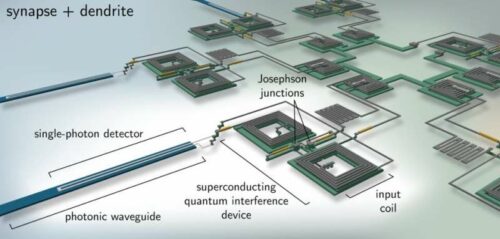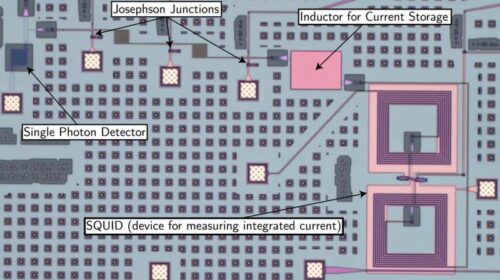Researchers have developed a circuit that behaves much like a biological synapse and uses just single photons to transmit and receive signals.

The brain has been an inspiration for designing computing systems. Researchers have even tried mimicking the brain structure into computer hardwares. They were called “neuromorphic chips” which showed great promise, but they have used conventional digital electronics, limiting their complexity and speed. As the chips become larger and more complex, the signals between their individual components become backed up like cars on a gridlocked highway and reduce computation to a crawl.
A team of researchers at the National Institute of Standards and Technology (NIST) has demonstrated a solution to these communication challenges. Researchers have designed a circuit that behaves much like a biological synapse yet uses just single photons to transmit and receive signals. Such a feat is possible using superconducting single-photon detectors. The computation in the NIST circuit occurs where a single-photon detector meets a superconducting circuit element called a Josephson junction.

A Josephson junction is a sandwich of superconducting materials separated by a thin insulating film. If the current through the sandwich exceeds a certain threshold value, the Josephson junction begins to produce small voltage pulses called fluxons. Upon detecting a photon, the single-photon detector pushes the Josephson junction over this threshold and fluxons are accumulated as current in a superconducting loop. Researchers can tune the amount of current added to the loop per photon by applying a bias (an external current source powering the circuits) to one of the junctions. This is called the synaptic weight.
This behavior is similar to that of biological synapses. The stored current serves as a form of short-term memory.The duration of this memory is set by the time it takes for the electric current to decay in the superconducting loops which can vary from hundreds of nanoseconds to milliseconds, and likely beyond.
“We could use what we’ve demonstrated here to solve computational problems, but the scale would be limited,” NIST project leader Jeff Shainline said. “Our next goal is to combine this advance in superconducting electronics with semiconductor light sources. That will allow us to achieve communication between many more elements and solve large, consequential problems.”
Saeed Khan et al, Superconducting optoelectronic single-photon synapses, Nature Electronics (2022).







